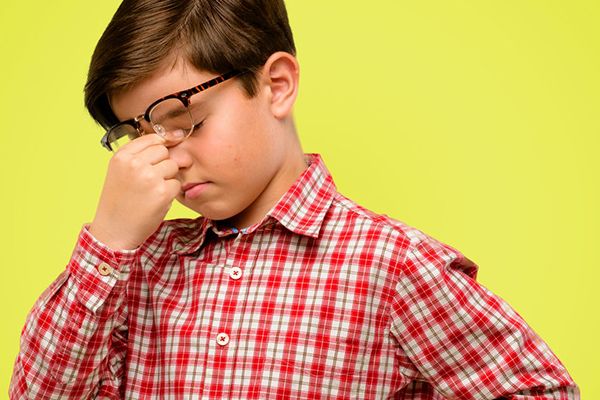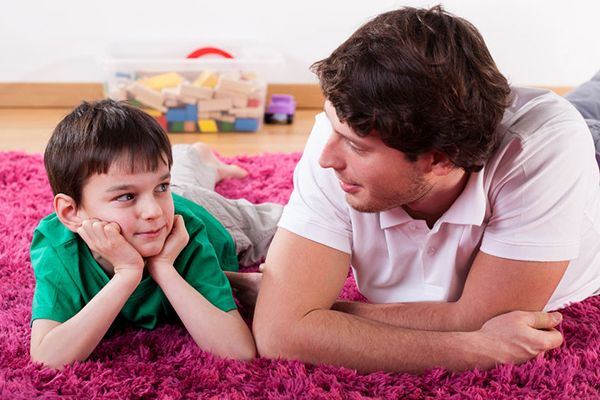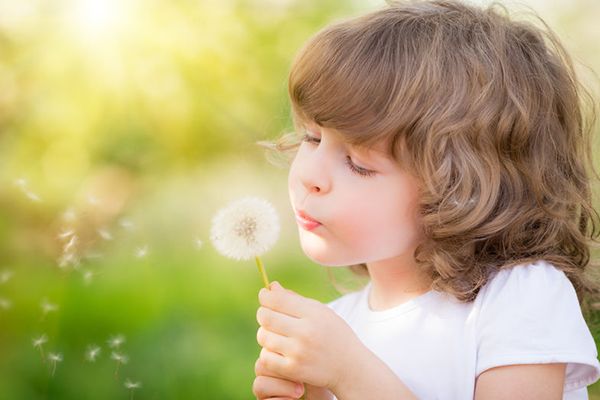Welcome back to the Healing Pain Podcast with Pernilla Garmy, PhD
We’re talking about an important topic. It’s the effect of bullying on chronic pain in children and adolescents. When I did an interview with Dr. Christine Chambers, a psychologist who treats children and adolescents with chronic pain, I said that I was going to be dedicating more episodes to this important topic because if we can prevent pain in children, it won’t carry over to having pain in adults. We won’t have the mass of chronic pain that we have now. When I saw this topic on a med search I did, I said this is someone I have to invite on the podcast to discuss what her research has shown. Our guest is Pernilla Garmy, PhD.
She is a registered nurse specializing in children’s health. She has several years of experience working as a school nurse in Sweden. She’s an Associate Professor at Kristianstad University in Sweden. Her research is focused on sleep, mental health and lifestyle in school-aged children and adolescents, as well as the link between pain, bullying and mental health problems, which we’ll talk about more. She’s published more than twenty scientific articles and published an article called Bullying, pain and analgesic use in school-age children, which was published in the journal, Acta Paediatrica.
Pernilla is Chair of the Sleep and Health Section of the Swedish Society of Nursing and the editor of the Swedish journal, Sleep and Health. I know you’re going to enjoy this episode. We talk a lot about pain in children through the context of bullying and analgesic use. This is great information. If you’re a physical therapist, a mental health professional, a school nurse and even parents of children with pain will be interested in this topic so make sure to share it out with your friends and family. Let’s welcome Pernilla to the show.
—
Watch the episode here:
Subscribe: iTunes | Android | RSS
Bullying, Pain, And Analgesic Use In Children with Pernilla Garmy, PhD
Pernilla, welcome to the Healing Pain Podcast. It’s great to have you here.
Thank you for inviting me.
Thanks for joining us. I know you‘re coming all the way from Sweden so we appreciate you joining us. It’s so great to be able to connect with people around the world who are doing such great work. I came across your work in May 2019 in a journal called Acta Paediatrica and the title of the paper is Bullying, pain and analgesic use in school–age children. I have not talked about bullying and chronic pain in this podcast. I was so excited to see that someone is doing some research into it. I reached out to you and I said, “Please join me,“ and you’d gratefully accepted. I’m glad to have you here. Can you tell us first a little bit about your background and what made you interested in the issues of bullying, pain and looking at analgesic use?
My background is in nursing. My experience is as a registered nurse at the children’s hospital and also as a school nurse in Lund in Southern Sweden. I met so many children with pain and also many children with mental health problems, bullied children. Somehow, I noticed that this was related to each other. It’s heartbreaking when you meet with suffering children from bullying or from pain or from both. I listened to the podcast that you had before with Christine Chambers. She talked about kids in pain in your podcast episode. It was brilliant. I liked it. Her research is amazing. The initiative to implement evidence methods into practice is wonderful because that is something we need to do to help these kids if they have pain or if they are bullied.
Also, the podcast about the ACTs with Dr. Jill Stoddard in Episode 139, she talked about her research on acceptance therapy. I liked her talking about that it might not be the pain itself that is the problem, but the distress associated with the pain. She said, “Pain is like anxiety. It’s part of life like ebb and flow. It comes and goes.“ That is so much more difficult to cope with pain when you are in stressful situations, for example, for kids who are bullied.
That’s why when I saw your information, I’m like, “Let’s start talking about this,” because I don’t think enough people are talking about this topic. You mentioned Dr. Christine Chambers‘ work. She’s one of the few people I know who start to look into how to effectively treat children with pain. You zeroed in on this topic of bullying, which is important. Why is it important for us to care about bullying?
Bullying is a significant public health concern because it’s one of the most common forms of victimization among school-age children and adolescents. It is associated with poor social, emotional and physical health, both during the experience and also between the experiences.
It affects them obviously psychologically and emotionally, but it also affects them physically in their bidirectional relationships that happen with both of those. Is it common, bullying among children and adolescents? We hear things in the news, but what is the research telling us?
There is some data from the International Research Networks, health behavior in school-aged children, 11% of children between the ages of eleven and fifteen claim to have been bullied at least twice a month within the last couple of months. These data are based on studies from more than 40 countries in Europe and North America.

We have good data from different countries, not one country, which is important. We’re seeing similar statistics across the globe. I know you started to focus in on one country, which is Iceland, especially since you’re in Sweden. Why Iceland? It‘s beautiful and Reykjavík is a fun city.
That’s a beautiful country and beautiful island. I was fortunate enough to make be in Iceland. Therefore, I have started the Icelandic data more in detail. In Iceland, the numbers of village children are lower. It’s only 5.5% of the children in Iceland who report having been bullied at least two times a month. Even though bullying is less frequent in Icelandic schools than the other countries, 5.5% is still rather a disconcerting number when considering the detrimental effects of bullying such as trouble with adapting to adult rules, forming lasting relationships and even suicide. Bullying affects both bullies and victims in negative ways. It’s not unusual for an individual to be a bully at one point and a victim at another. That’s also important to have in mind. In the studies I had been conducted, we are focusing on the indications of being a victim, not being a bully. We are focusing on the victims.
Kids as they go through their development, they explore lots of different types of feelings and emotions. They have lost different types of interactions with peers. A lot of things happen in childhood and adolescents. How do you define the term bullying in your work?
Bullying is a difficult term to define. The HBSC Network states that someone is being bullied when others say or do nasty and unpleasant things to him or her, tease him or her repeatedly in a way he or she does not like, or he or she is left out of activities. There are different definitions. This definition differs somewhat from the other definitions suggested. Anyway, even how you define the bullying, one bullied child is one too many.
What happens early in life a lot of times can affect what happens later in life. I know children with untreated chronic pain are more likely to develop things like depression and anxiety later on in life. What is the link between bullying, chronic pain and other mental health conditions?
I would say chronic pain and mental health problems are generally linked and may influence each other. Headache, abdominal pain, backache is associated with depressive and anxiety symptoms in children. Bullying is related to experiences of pain such as migraines, headaches and backaches. However, the underlying causal mechanisms are not yet fully understood.
When we look at children with chronic pain, they typically present with three things, either migraines or tension headaches or headaches, abdominal pain, usually Irritable Bowel Syndrome of some sort. It used to be known as functional bowel disorders and lower back pain. Those are the three things that show up in the practice of treating children and adolescents with chronic pain. When you looked at your research, what did it tell you about the use of analgesics? Different types of medications alleviate pain. There are opioids. There is Ibuprofen. There is Tylenol, Acetaminophen, Paracetamol, all those are similar. What did your research tell you?
Before our study, we were only aware of one prior study regarding the consumption of analgesics in bullied children and adolescents. That study was conducted in Denmark in 2005 and ’06 and that study showed that being a victim of bullying was associated with elevated self-reported use of medicine for headaches, stomachaches, sleep difficulties and nervousness. This increased use has not been explained by the higher prevalence of symptoms. That’s important. Therefore, it is important to explore if the results are similar in another setting and at another time. The aim of our study was to further examine the use of analgesics and its association with bullying among school-age children while considering regular bodily pain.
Tell me about your study. Tell me about how you conducted this study and what some of the findings were.
We use the Icelandic dataset from the WHO International Research Network and the HBSC Research Network is a large–scale cross–national study of eleven, thirteen and fifteen-year–olds carried out every four years in 43 countries in Europe and North America. The focus is on health behaviors and their determinants and consequences. In all other countries, you take a small sample from the country. Iceland is such a small country. In Iceland, we use the whole country. It’s all students in Iceland in the grades of six, eight and ten, who attended school at the day of administration of the questionnaire, they were included in the study. In a total of 161 schools, we have about 11,000 students participated. That’s quite large. The response rate was 84% because it’s voluntarily. They are not obliged to respond to the questionnaire if they don’t want to, but it’s quite tight. 84% of all the Icelandic children in this age group responded. The mean age in each grade was eleven, thirteen and fifteen years.

That’s cool because you’ve got a sample of the entire country basically. Usually, we have 50 people. You’re not sure but you have the entire country of Iceland. How did you ask about bullying in this study?
The questions regarding bullying were proceeded by the following explanation. We say a student is being bullied when another student or a group of students says or does nasty and unpleasant things to him or her. It’s also bullying when a student is teased repeatedly in a way that he or she doesn’t like or when he or she is left out of things. However, it’s not bullying when two students at about the same strength or power argue or fight. It is also not bullying when a student is teased in a friendly and playful way. In this study, the following question regarding bullying was included, “How often have you been bullied in school during the last month?” We have five response options ranging from never to several times a week.
In this particular study looking at bullying, pain and analgesic use, how did you measure or look at pain and analgesic use?
The students were asked how often they had experienced the following symptoms in the last six months. It was a headache, stomachache, backache, and neck and shoulder pain. Their response options for each symptom ranged from about every day to rarely or never. We also asked the students if they took medications for headaches, stomachache, backache or neck or shoulder pain. There were four response options ranging from last week to never. They also were asked what kind of analgesics they used when experiencing pain.
Tell me about the results. Tell me what the results were and the interpretation of the results are important for people to hear about.
The use of analgesics for easing headache, stomachache, back pain and neck and shoulder pain was significantly higher among bullied students than among non-bullied peers. This relationship was observed in boys as well as girls. However, girls do consume analgesics significantly more frequently than boys. We went further with multiple logistic regression analysis to assess the bullying, victimization and pain medication relationship when taking self-reported pain into account. It showed that bullied students used more analgesics compared to non–bullied peers even after controlling for pain in addition to gender, age and social-economic status.
The interpretation results, what do they mean to us as practitioners?
The aim of the study was to examine the use of analgesics and its association with bullying among school–aged children while considering regular physical pain. Bodily pain and mental health problems have been found in earliest status to be linked with another. It suggested it’s a bidirectional relationship. We found the high frequency of pain medication use were both among non-bullied and bullied students. However, the use of analgesics was significantly higher among bullied students even after controlling for pain, age, gender and socioeconomic status. Bullied students tended to experience more pain than their non-bullied students.
Bullied students were twice as likely to use pain medication even when controlling for experienced pain. These results, they agree with the prior Danish study that I mentioned earlier among adolescents. Therefore, this should be taken seriously because the increased use of analgesics is significantly associated with an increased risk for chronic pain, especially migraines several years later. Prior studies found that bullied children tend to be more prone to alcohol and substance use. We suspect that other experimentation with medications for purposes other than pain relief.
This study is great. It’s groundbreaking because there’s not been a lot done on this topic. Let’s talk about parents first. What should parents do about bullying?
It’s a hard question. It doesn’t matter if your child is victimized from bullying or if your child is an observer or if your child is a bully, the most important thing is that we need to talk. We need to have a climate where the children dare to speak with their parents. Also, the children who are teasing other children, also children who are bullies, they need to have this climate where they dare to talk with their parents to have guidance. Parents and us, health professionals, we should also be more aware of potential analgesic overuse because it could be related to co-morbidity in adolescents. To think that it might be this pain, this headache or stomachache. It could be bodily pain or periods or something, but it could also have other reasons. It could be, for example, bullying behind it. We know that analgesics have negative side effects.

That can worsen when combined with other coping behaviors such as alcohol use, even if the children and adolescents, they shouldn’t use alcohol. At least in Iceland, they sometimes they do it even underage. We know alcohol and analgesics is not a good combination. That makes the use even more harmful. The higher reported pain in different kinds can be caused by the stress experienced in association with being bullied. That can drive children to experiment with analgesic medicines to lessen that pain and distress. Due to the possible detrimental effects of non-therapeutic use of analgesics, it’s important for us school nurses and also other health professionals to adopt the supervised, holistic perspective of pain and medication among children and adolescents especially for these children who are bullied and we need to see them. That’s the first step that we are aware that there are bullied children.
Your study brings great awareness around that topic. What’s the take-home message for those that are tuned in to this episode with regard to bullying, pain and analgesic use?
I will say that the take-home message is that the high prevalence of pain and the use of pain medication in children needs to be recognized by health professionals in schools and also outside of schools, wherever we meet children and adolescents. Bullying correlates with pain and the use of pain medication in children. This study improves our understanding of these relationships. Coordinated professional efforts are needed to identify proper interventions and prevention approaches for implementation in child healthcare.
Pernilla, it’s been great having you on the podcast. What’s next for you on this topic? Do you plan on researching this topic more and writing about it? Can you tell us what’s next?
At the moment, we are conducting focus groups, interviews. We went from this large-scale sample, started with 11,000 of students and now we are conducting qualitative interviews. We know from these statistical methods. We also conducted other studies where we saw the connection between pain and mental health problems, pain and stress, the depressive symptoms in adolescence. We know there is a link between pain and mental health problems, pain and bullying and use of analgesics. To come to the next step to find good interventions, we need to listen to the children and to the adolescents. That is what we are doing right now. We are conducting interviews with school–aged children and also with school nurses. How can we do better? How can we help vulnerable children with chronic pain and those who are victimized from bullying?
The school nurses are on the front lines. They’re the ones who are seeing this and working with it every day.
It’s very easy for the children to come to the school nurse with pain. It’s not shameful to go to the school nurse and talk about the pain. It might be shameful or it shouldn’t be, but I know it is. Most children, adolescents and also adults, we are ashamed if we are alone and if we are bullied. That is not what you go to the school nurse or you go to anyone. That’s the first step. It’s the lower threshold to enter the school nurse and to say, “I have a stomachache.” That’s very common that we start to meet children with pain and we can find out is there something else. How can we help to relieve this pain or perhaps also the mental health problems or the relational problems at school?
Pernilla, it’s been fascinating and I’m very grateful for having you on the podcast. Thanks for joining us from Sweden. I appreciate you being here. People are going to want to follow, want to learn more information and read your study, Bullying, pain and analgesic use in school-age children. You can find that in Acta Paediatrica 2019. Can you tell us where we can find out more information about you?

There is also information on my university, Kristianstad University. Unfortunately, it’s mainly in Swedish. I would say at ResearchGate. That’s more in English. Please find my spot at ResearchGate.
Hopefully, there are maybe some Nordic people who can check out your gate there in Sweden and read it. I want to thank Pernilla for being here. Bullying, pain and analgesic uses are important topics. Not that many people are studying it. Please share this episode out with your friends and family on whatever social media link and platform that you follow. Take it and put it into a Facebook group so people can access information. We need to help kids more with chronic pain if we can help them. The fascinating thing about children with chronic pain is that children are so plastic and we have the ability to heal them. Almost 80% of the children with chronic pain that we treat recover fully. We can’t say that unfortunately for adults, it’s a little more difficult with adults, a little more challenging. With children, we have a window of opportunity to help them. Please make sure to share this podcast out. It’s been a pleasure being here and we’ll see you next time.
Important Links:
- Dr. Christine Chambers – previous episode
- Dr. Pernilla Garmy
- Bullying, pain and analgesic use in school-age children – article
- Dr. Jill Stoddard – previous episode
- ResearchGate – Dr. Pernilla Garmy
- https://www.HKR.se/pernilla-garmy
About Pernilla Garmy, PhD
 Dr. Pernilla Garmy is a registered nurse specialized in children’s health. She has more than ten years of experience working as a school nurse in Sweden. She is an associated professor at Kristianstad University in Sweden. Her research is focused on sleep, mental health and lifestyle in school-aged children and adolescents, as well as the link between pain, bullying and mental health problems. She has published more than 20 scientific articles in well-known journals indexed in Pubmed. Pernilla Garmy has recently published the article “Bullying, pain, and analgesic use in school-age children and adolescents” in the journal Acta Paediatrica together with Erika Hansson, Rúnar Vilhjálmsson, Gudrún Kristjánsdóttir. Pernilla Garmy is the chair of the Network Sleep and Health in the Swedish Society of Nursing, and the editor of the Swedish journal “Sleep and health”.
Dr. Pernilla Garmy is a registered nurse specialized in children’s health. She has more than ten years of experience working as a school nurse in Sweden. She is an associated professor at Kristianstad University in Sweden. Her research is focused on sleep, mental health and lifestyle in school-aged children and adolescents, as well as the link between pain, bullying and mental health problems. She has published more than 20 scientific articles in well-known journals indexed in Pubmed. Pernilla Garmy has recently published the article “Bullying, pain, and analgesic use in school-age children and adolescents” in the journal Acta Paediatrica together with Erika Hansson, Rúnar Vilhjálmsson, Gudrún Kristjánsdóttir. Pernilla Garmy is the chair of the Network Sleep and Health in the Swedish Society of Nursing, and the editor of the Swedish journal “Sleep and health”.
The Healing Pain Podcast brings together top minds from the world of pain science and related fields to discuss the latest findings and share effective solutions for persistent pain.
If you would like to appear as an expert speaker in an episode of The Healing Pain Podcast contact [email protected].
Love the show? Subscribe, rate, review, and share!
Join the Healing Pain Podcast Community today:
